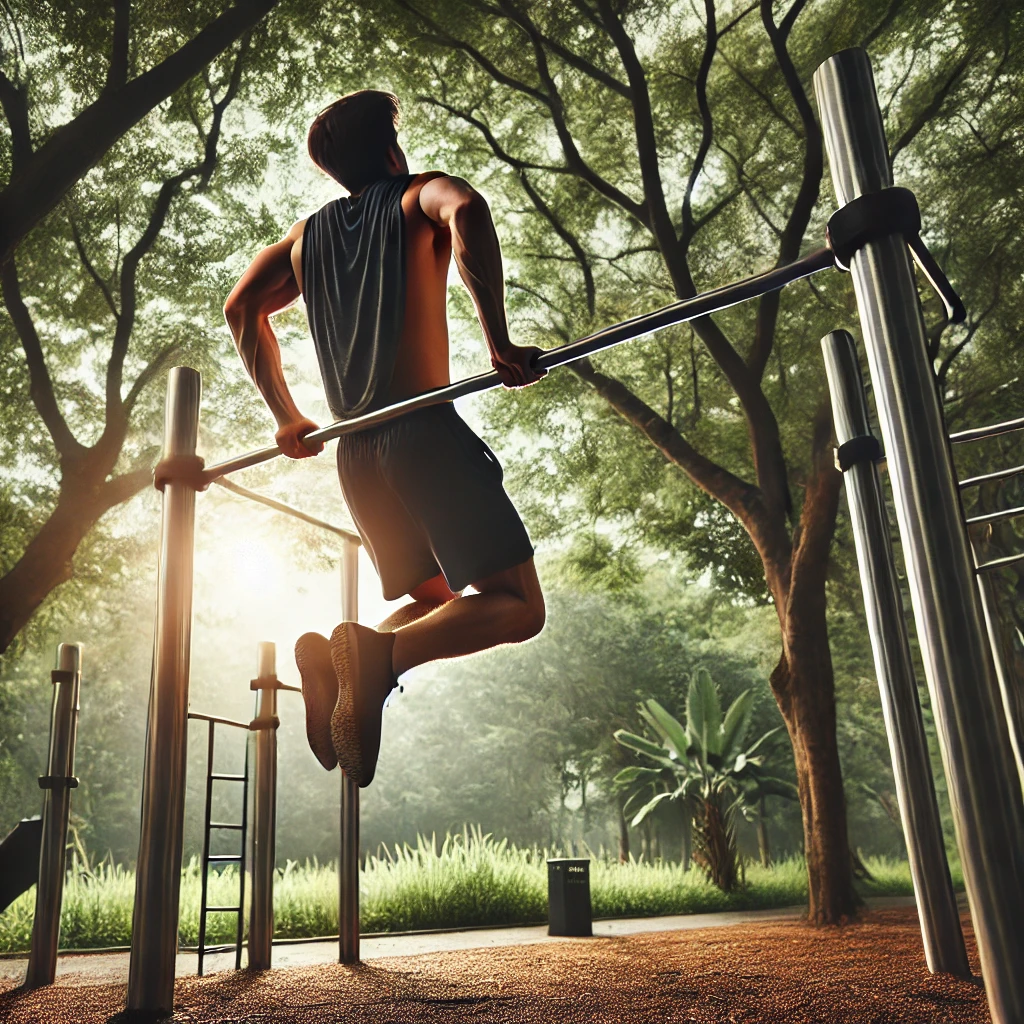What Are Calisthenics Exercises?

Calisthenics exercises are a form of bodyweight training designed to improve strength, endurance, flexibility, and coordination. This training method has been practiced for centuries, offering a highly effective, accessible way to build muscle and burn fat without needing equipment. From push-ups to squats, calisthenics provides an excellent workout that can be done virtually anywhere, making it ideal for those who prefer working out at home, in the park, or while traveling.
1. Push-Ups
Push-ups are one of the most fundamental calisthenics exercises. They target the chest, shoulders, triceps, and core, making them a full-body workout. By lowering your body to the ground and pushing back up, you work various muscle groups, which leads to better upper-body strength. Modifying push-ups, such as performing them on your knees or adding a clap between reps, can adjust the difficulty level.
- Benefits: Builds upper-body strength, improves posture, and strengthens the core.
- Tip: Keep your back straight and avoid letting your hips sag to maximize muscle engagement.
2. Pull-Ups
Pull-ups are excellent for developing upper-body strength, particularly in the back, shoulders, and arms. Hanging from a bar and pulling yourself upward until your chin clears the bar targets your latissimus dorsi, biceps, and forearms. If you’re a beginner, resistance bands or assisted pull-up machines can help you build strength.
- Benefits: Enhances back and arm muscles, improves grip strength, and promotes shoulder stability.
- Tip: Engage your core to avoid swinging during the movement, which can compromise form.
3. Squats
Squats are the cornerstone of lower-body calisthenics exercises. They target the quadriceps, hamstrings, glutes, and calves. By lowering your hips from a standing position and then returning to standing, you work multiple muscles simultaneously. Variations like jump squats or pistol squats can challenge your balance and build explosive strength.
- Benefits: Increases leg strength, improves mobility, and burns calories.
- Tip: Keep your chest up and ensure your knees don’t extend past your toes.
4. Lunges
Lunges are another excellent lower-body exercise that targets the quads, hamstrings, and glutes. By stepping forward with one leg and lowering your hips until both knees are bent at about 90 degrees, you activate the major muscles in your legs. Adding weight or performing walking lunges can increase the challenge.
- Benefits: Strengthens leg muscles, enhances balance, and boosts flexibility.
- Tip: Ensure your front knee stays aligned with your ankle to avoid injury.
5. Dips
Dips focus on the triceps, chest, and shoulders, providing a fantastic upper-body workout. You can perform them using parallel bars or a sturdy bench. Lower your body until your elbows are at a 90-degree angle, and then push back up. For added difficulty, you can lift your feet off the ground or use weights.
- Benefits: Builds arm and shoulder strength, improves range of motion, and tones the upper body.
- Tip: Keep your elbows tucked close to your body to avoid shoulder strain.
6. Planks
Planks are one of the most effective exercises for core stabilization. By holding a push-up position with your body in a straight line, you activate your abdominal muscles, lower back, and shoulders. Planks can be modified by lifting one arm or leg or transitioning into side planks.
- Benefits: Strengthens core muscles, improves balance, and enhances overall stability.
- Tip: Keep your body straight and avoid arching your back to maximize results.
7. Burpees
Burpees are a full-body exercise that combines a squat, push-up, and jump into one explosive movement. They elevate your heart rate, making them a great cardiovascular exercise. Burpees challenge multiple muscle groups, helping build endurance and agility.
- Benefits: Improves cardiovascular fitness, boosts metabolism, and builds strength.
- Tip: Focus on smooth transitions between movements to maintain momentum.
8. Mountain Climbers
Mountain climbers engage your core, shoulders, and legs, offering both a strength and cardio workout. Starting in a plank position, alternate bringing your knees to your chest in a quick, running-like motion. This exercise raises your heart rate while toning your abs and legs.
- Benefits: Increases core strength, boosts endurance, and burns fat.
- Tip: Keep your core tight and hips low to maximize the workout’s effectiveness.
9. Jumping Jacks
Jumping jacks are a simple yet effective way to get your heart rate up while working your entire body. This aerobic exercise involves jumping with legs apart while raising your arms overhead, then returning to the starting position.
- Benefits: Enhances cardiovascular endurance, burns calories, and improves coordination.
- Tip: Maintain a steady rhythm and keep your core engaged.
10. Handstands
Handstands are an advanced calisthenics exercise that requires upper-body strength, core stability, and balance. Kicking your legs up into the air and holding your body weight on your hands challenges your arms, shoulders, and core.
- Benefits: Improves balance, strengthens upper-body muscles, and enhances core stability.
- Tip: Practice against a wall for support if you’re a beginner.
The Benefits of Calisthenics
Calisthenics offers a host of benefits that make it an ideal workout for anyone, from beginners to athletes. Here are some key advantages:
- Improves Functional Strength: Calisthenics exercises mimic everyday movements, improving your ability to perform daily activities with ease.
- No Equipment Needed: You can perform calisthenics anywhere, making it a cost-effective workout option.
- Burns Fat and Builds Muscle: These exercises boost metabolism and engage multiple muscle groups, helping you burn fat while building lean muscle.
- Increases Flexibility and Mobility: Calisthenics encourages full range-of-motion movements, which enhance flexibility and joint mobility.
- Boosts Mental Health: The challenge and focus required in calisthenics can improve mental well-being, reducing stress and promoting discipline.



